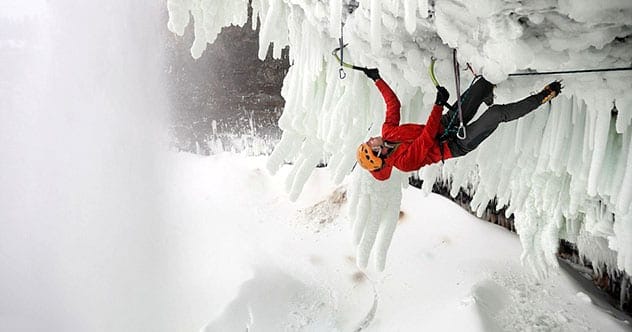Bear Grylls, known for his ‘Man vs. Wild’ series, has tackled some of the most daring adventures on Earth. From his time in the British SAS to his global expeditions, he’s faced situations that would break most people. While he’s up for almost anything, there are a few challenges that might be too extreme, even for him.
Here are ten adventures that either Grylls hasn’t done or perhaps hasn’t gotten around to yet. They represent some of the most intense and dangerous activities one can undertake.
Volcano Boarding Down Cerro Negro
Volcano boarding, or “volcano surfing,” involves sliding down the slopes of an active volcano. Cerro Negro, near Leon, Nicaragua, is a popular spot for this. While the lava isn’t molten, the risks are still very real.
Cerro Negro is relatively young, formed just over 160 years ago. To participate, you hike up the 728-meter (2,388 feet) cone with a wooden board. The descent can be done sitting or standing, but protective gear is crucial due to the sharp volcanic rock. Falls can lead to serious skin abrasions.
The Running Of The Bulls
The Running of the Bulls is a famous event held annually in Pamplona, Spain, as part of the San Fermín festival (July 6-14). Participants run ahead of six bulls and two groups of oxen through the city streets.
To participate, you must be at least 18 years old, run in the same direction as the bulls, avoid antagonizing them, and stay sober. The bulls can reach speeds of up to 24 kph (15 mph), leading to frequent injuries from trampling and pile-ups. While deaths are rare, injuries are common.
Wing Walking
Grylls isn’t a fan of heights, still, he hasn’t done one of the most dangerous extreme sports: wing walking. This activity involves standing and moving on the wings of an airplane during flight. It requires specialized training and a suitable aircraft, typically a biplane.
Wing walkers often perform aerial acrobatics. Though most performers are professionals, some schools like the Mason Wing Walking Academy offer training for those willing to try. The sport is risky, and accidents can be fatal.
Shark-Diving Around Guadalupe Island Without A Cage
Cage-diving with sharks is relatively safe, but some divers prefer to swim without the cage. Diving with Great White sharks without protection is incredibly rare and dangerous.
Mexico rarely issues permits for cage-free shark dives, but specialized permissions are sometimes granted. While sharks aren’t particularly interested in eating humans, they might test bite out of curiosity, which can be lethal. It’s always safer to use a cage.
Kayak Across The English Channel
The English Channel ranges from 34 km (21 mi) to 240 km (150 mi) wide and is one of the busiest shipping lanes in the world. The waters are often cold, making a kayak crossing dangerous.
A crossing can take around six hours. While it’s possible with minimal training, it’s wise to train for up to a year. Support craft and guides are recommended to ensure safety. Attempting this without support is highly discouraged.
Ice Climbing Wolverine At Helmcken Falls
Helmcken Falls, in British Colombia, Canada, is a stunning waterfall that turns into a perilous series of icicles in winter. Climbing it is considered the most dangerous ice climb on Earth.
The most dangerous climb, called Wolverine, is rated WI 11—the highest rating on the WI numeric scale. It involves steep climbing through aerated spray ice and should only be attempted by expert climbers.
Free Solo Climbing El Capitan
Free-solo climbing means climbing without ropes, harnesses, or protective equipment. El Capitan, in Yosemite National Park, is a nearly 3,000-foot vertical granite cliff and the riskiest climb to attempt.
Alex Honnold famously completed the climb in 2017. Attempting such a feat is not recommended unless you have Honnold’s level of expertise.
Cave Diving The Blue Hole
Cave diving is one of the most dangerous activities, and “The Blue Hole,” north of Dahab, Egypt, is the most hazardous underwater cave. It is a submarine sinkhole that is 100 meters (328 feet) deep.
The Blue Hole is known as the deadliest dive spot on Earth, with over 200 fatalities. Divers have found bodies in its depths, and memorials mark the passing of those who succumbed. Even experienced divers should approach with extreme caution.
BASE Jumping Mount Everest
This adventure starts with climbing Mount Everest, followed by a BASE jump in a wingsuit. Valery Rozov jumped from Changtse, the northern peak of Everest, at a height of 7,220 meters (23,690 feet).
Rozov glided down to the Rongbuk glacier, reaching speeds of up to 125 mph. To replicate this, you need a wingsuit, extensive training, and potentially permission from the Chinese government.
Solo Cross Antarctica
Crossing Antarctica is one of the most dangerous expeditions. While team crossings have been done, a solo crossing wasn’t accomplished until 2018. Colin O’Brady and Louis Rudd crossed the continent unsupported and unassisted, dragging 300 lb. sleds.
They began at the Ronne Ice Shelf on November 3rd and passed through the South Pole Research Station to complete their trek in late December. This requires extensive training, supplies, money, and conditioning.
These adventures push the boundaries of human capability and risk. Which of these extreme challenges do you find the most daunting? Leave your comment below!










